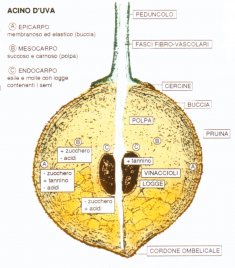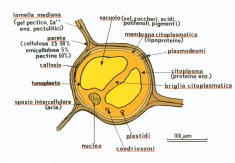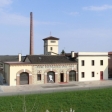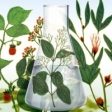
"Elements of scientific knowledge on grapes and must"
The modern oenology tends to detach more and more from the empiricism to produce quality wines, quality meaning organoleptic pleasure and absence of harmful and prohibited substances. As a result, the work in the cellar has a profound change also in the selection of grapes processing techniques. It has contributed and contributes to this development a huge amount of viticultural, microbiological and technological research which should be, at least in the essential parts, known by the winemaker. Therefore in this note, we try to examine the composition of grapes and must on the basis of recent scientific findings. The Vitis genus includes more than forty species, of which more than twenty indigenous of the North America and others of East Asia. The species that interests directly wine is the European vine (Vitis vinifera L.) which grows spontaneously in Europe throughout the Mediterranean basin which includes the various and many varieties that the man’s work has selected in years of cultivation. The beginning of modern viticulture can be traced back to the appearance of diseases such as phylloxera, oidium, downy mildew leading to a radical renewal of viticulture in the Old World. In particular, the phylloxera devastated vineyards across Europe before it was known the behavior of the pathogen and discovered the method to contain the damages. Fixed the problem of phylloxera the ampelographic studies have led to the recognition of distinct varietal populations and of which they can be selected top quality clones and more suitable for different ecopedologic conditions.
-
If you wish to download the entire document, please send a request to info@grappa.com specifying the title of the text you wish to receive, the reason for this request and full applicant details.
Thank you.
POLI GRAPPA MUSEUM
- Title:
- Fondamenti scientifici sulla conoscenza dell'uva e del mosto
- Author:
- Colagrande osvaldo
- Year:
- 2000














